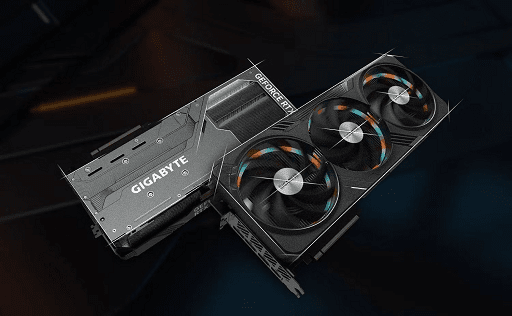The RTX 4080 from Nvidia has been available for some time, but the RTX 4070 Ti is a brand-new release, and the circumstances around it are pretty peculiar. The GPU giant initially referred to this graphics card as the “RTX 4080 12GB,” despite the fact that it was a version with many inferior specifications in comparison to its predecessor. Nvidia “unlaunched” it in response to criticism, only to reintroduce it at a later date under the name RTX 4070 Ti. This occurred when the company received some criticism regarding the product.
The RTX 4070 Ti has finally been released after taking an unorthodox route to get here, and both of these graphics cards have been put through their paces by our own testing team. Let’s compare the two of them to find out which one is better.

Nvidia RTX 4080 and RTX 4070 Ti: Performance
We put both the RTX 4080 and the RTX 4070 Ti through their paces in a variety of tests, including both synthetic and gaming benchmarks, in order to determine which graphics card is superior. In order to get a comprehensive picture of their performance, we have also evaluated how they stack up against some of the other top graphics cards that are currently available on the market.
Beginning with synthetic benchmarks, we immediately observe that the actual competitor of the RTX 4070 Ti is not its Team Green sister, but rather AMD’s RX 7900 XT. This is the case right out of the gate. During these testing, the RTX 4070 Ti demonstrated performance that was approximately 10% lower than that of the RX 7900 XT. There is a greater performance gap between the RTX 4080 and the RTX 4070 Ti. The RTX 4070 Ti was around 15% slower in the 3DMark Time Spy benchmark.
Another shortcoming of the RTX 4070 Ti is shown when it is subjected to the Port Royal ray tracing test by 3DMark. The test reveals that the GPU is not nearly the ray tracing beast that one would anticipate from an Nvidia graphics card that costs $900. It has a score that is around 20% lower than the RTX 4080, putting it well behind.
Moving on to gameplay, we examined the performance of the GPUs at resolutions of 4K, 1440p, and 1080p respectively. Although Nvidia advertises the RTX 4070 Ti as a graphics processing unit (GPU) for gaming at a resolution of 1440p, it is actually capable of running select games at a resolution of 4K. It was able to reach an average of 77.1 frames per second (fps), which indicates that gameplay was consistent at that resolution. Due to the fact that it is also 20% slower than the RTX 4080, that number is not nearly as amazing as it could have been.
Despite the fact that the RTX 4090 and the RTX 4080 continue to hold their uncontested positions as the two winners in 4K gaming, the RTX 4070 Ti is left following behind in a position that is somewhat insecure. It is outclassed by the two AMD RX 7900 XT/XTX cards, and even the RX 6950 XT from the previous generation is only a hair slower while being cheaper.
When we switch to 1440p, the situation is significantly improved. The RTX 4080 managed an impressive 159.3 frames per second on average across all of our tests, while the RTX 4070 Ti kept a reasonable 134.4 frames per second. This results in a drop in frame rates for the RTX 4070 Ti of approximately 15 percent. However, its immediate competitor, the AMD RX 7900 XT, performed far better with 146.7 frames per second, which is roughly equivalent to an increase of 8 percent.
The margins over the previous generation of cards are likewise bigger here, with the RTX 4070 Ti maintaining a stronger lead over the RTX 3090 and a generational improvement of 40% over the RTX 3070 Ti. Both of these improvements are based on the fact that the RTX 4070 Ti is superior to the RTX 3090.
If 1080p gaming is all you’re interested in, the GeForce GTX 4080 and GTX 4070 Ti are just overkill. Both of these cards perform really well at this resolution, which demonstrates that you should consider purchasing one of the top GPUs for 1080p instead. The RTX 4070 Ti achieves an average of 170.5 frames per second, while the RTX 4080 keeps a clear lead with 191.7 frames per second. Both are light years ahead of the Ampere versions of their respective concepts.
However, despite Nvidia’s status as the unchallenged leader in ray tracing, the RTX 4070 Ti does not quite live up to its name. It is interesting as AMD generally doesn’t put up much of a fight when it comes to ray tracing, so the fact that this card comes close to matching the performance of the AMD RX 7900 XTX at 4K is noteworthy. It was only able to maintain 34.3 frames per second in comparison to the RTX 4080, which offered 43.5 frames per second by comparison.
When we upgrade to 1440p, there is a discernible improvement to the ray tracing game. Even though the RTX 4070 Ti was only able to achieve 68.6, the RTX 4080 manages an average of 84.3 frames per second, giving it a slight advantage over any AMD GPU. It is marginally more expedient than the RTX 3090.
Nvidia RTX 4080 vs. RTX 4070 Ti: price and availability
As was previously reported, both the RTX 4080 and the RTX 4070 Ti (also known as the 12GB version of the RTX 4080) were initially announced on the same day, and both were scheduled to arrive on the same date: November 16, making them a bit later than the flagship RTX 4090. Nvidia, however, discontinued the GPU with a lower processing power well before the day in question, leaving the RTX 4080 to fight for itself on the day it was scheduled for release.
Even while Nvidia didn’t say much about what would happen to the card it decided to discontinue, most sources within the industry knew that it would have to appear again at some point in the future. Because the GPUs had already been manufactured, abandoning the entire project at this point would have been extremely expensive.
Nvidia’s announcement of the RTX 4070 Ti during its keynote address at CES 2023 seemed inevitable; it was only a question of when. After that, on January 5, which was two days later, the card was released to the public in an official capacity.
The RTX 4080 has never been available for less than $1,200, and it did not change its pricing when it became available. The initial asking price for its less powerful sister was $900, which a great number of individuals believed to be excessively expensive. Now, the RTX 4070 Ti has a suggested retail price of $800, but given that Nvidia will not be producing a Founders Edition variant of the card, the truth is that the GPU could end up costing more than that. The final price will be determined by Nvidia’s partners, such as Asus or Gigabyte, among other companies.
Nvidia RTX 4080 vs. RTX 4070 Ti: Specifications
| Nvidia GeForce RTX 4080 | Nvidia GeForce RTX 4070 Ti | |
| Process node | TSMC 4nm | TSMC 4nm |
| CUDA cores | 9,728 | 7,680 |
| Ray tracing cores | 76 3rd-gen | 60 3rd-gen |
| Tensor cores | 304 4th-gen | 240 4th-gen |
| Base clock | 2,205MHz | 2,310MHz |
| Maximum clock | 2,505MHz | 2,610MHz |
| Memory size | 16GB GDDR6X | 12GB GDDR6X |
| Memory speed | 21Gbps | 21Gbps |
| Memory bus | 256-bit | 192-bit |
| TDP | 320 watts | 285 watts |
Both the RTX 4080 and the RTX 4070 Ti were constructed using the Ada Lovelace architecture; however, as you can see, the specifications of the RTX 4070 Ti have been drastically reduced in comparison to those of the RTX 4080.
Memory capacity is reduced by 4 gigabytes, and the number of CUDA cores, Tensor cores, and ray tracing cores is reduced by 21%. The 192-bit memory bus is another issue with the RTX 4070 Ti, and as we mentioned in our evaluation of the card, this is the primary reason why the RTX 3070 Ti has almost forty percent greater bandwidth than the RTX 4070 Ti.
The RTX 4070 Ti is positioned in the middle of the RTX 3070 Ti and the RTX 3080 in terms of its CUDA core volume. On the other hand, it has more RAM than the RTX 3070 Ti, and it also makes use of the most recent technology from Nvidia, including DLSS 3 and Shader Execution Reordering (SER).
Both of the cards lie somewhere within a comparable area when it comes to their power usage, which is a significant step down from the 450W RTX 4090. Nvidia’s Ada Lovelace has proven to be surprisingly power efficient, despite the fact that in practice they almost never reach those numbers.
Which is more important to you?
The choice between the RTX 4080 and the RTX 4070 Ti is a difficult one because, in a sense, we are being forced to choose the more desirable of two undesirable options. Please don’t misunderstand me; I’m not saying that either of these graphics cards is bad, but I am saying that they must be among the very finest that are now available. It’s just that every option has certain drawbacks associated with it.
Many people have the opinion that the RTX 4080 is priced too high. It is simply a worse deal when compared to the RTX 4090, which has a list price of $1,600. This is the case to such an extent that the debut of the RTX 4090 actually helped to promote sales of the RTX 4090. It is a wonderful card that supports DLSS 3 and provides access to gaming at both 1440p and 4K resolutions on ultra settings; nevertheless, it could use to be cheaper in order to explain the fact that it is simply a lot slower than the flagship RTX 4090.
On the other hand, the RTX 4070 Ti presents a challenge due to the fact that it is unable to aspire to compete with the RTX 4080. This is the reason why Nvidia reduced the price, although it’s possible that costs will go up once the card is available to the public. If it ends up near the price of the AMD Radeon RX 7900 XT (which is $900), the RTX 4070 Ti will be in an awkward position on the market. This is a position in which AMD’s card (which isn’t a great deal either — the RX 7900 XTX is better value) is actually the better option, provided that you don’t mind missing out on DLSS 3 and ray tracing in your games.
Having said all of that, if you have your heart set on purchasing either the RTX 4080 or the RTX 4070 Ti, the decision is going to boil down to the specific gaming needs you have and the amount of money you have available. There are better options available than the RTX 4070 Ti, and the RTX 4080 could be one of them; however, if you want to keep your budget around $800, the RTX 4070 Ti is certainly a decent GPU for 1440p gaming. If you can afford to spend a little more, there are better options out there than the RTX 4070 Ti, and the RTX 4080 could be one of them.
Would you like to read more about the difference between Nvidia RTX 4080 and RTX 4070 Ti-related articles? If so, we invite you to take a look at our other tech topics before you leave!










